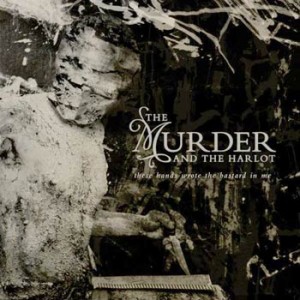The Murder and the Harlot falls short
Few have heard of The Murder and the Harlot, a heavy metal band from New Jersey, but their debut album These Hands Wrote the Bastard In Me might just be the key as to why.
The new album contains nine tracks, half of which tend to blend together in a mash-up of screaming and forgettable guitar riffs. The first half fails in establishing a unique sound for the band, but the second half redeems the album’s shortcomings.

Mixed results · The band creates tracks that reel in the listener but fail to stick to a formula and alienates its non-metal audience members. - Photo courtesy of The Muse Box
The biggest issue in the first few tracks is lead singer (and screamer) Kenny Ramirez. Heavy metal applauds guttural screaming, however, why must it be so difficult to understand the lyrics? “The Graveyard Shift” contains some of the album’s most interesting poetry, but the words fall victim to Ramirez’s incoherent roaring.
The lyrics only become audible after they have been repeated several times. Throughout the album, The Murder and the Harlot seem especially partial to drilling its most poignant lyrics. In “The Difference Between,” half the song is a recycling of two basic lines: It’s like I’m drowning / As you keep swimming away.
The album ends on a decent note with “Realization: Answers” and “Porcelain,” both of which seem to work because of the incorporation of metal screaming and more traditional singing. The mix is done extremely well and could have functioned as a signature trait in some of the earlier songs on the album, particularly in the forgettable “Hey Man” and “The Graveyard Shift.”
Considering These Hands Wrote the Bastard In Me is the band’s first record, such a mix throughout the tracks would have likely worked to reach a more widespread audience.
In the last track, “Porcelain,” The Murder and the Harlot utilizes repetition in an emotional confession. The song begins with a forgettable guitar riff and, once again, Ramirez’s too-difficult-to-comprehend shouting. The chorus, however, contains that key combination of singing and screaming. It’s both catchy and hardcore.
Halfway through the song, the instruments suddenly shift to a softer rhythm and the singing falls into a haunting melody, eventually leading to some wonderful closure for the repetitive but far from forgettable song as the melody croons, I lost it all / Let these nightmares get the best of me.
There’s no contest when it comes to choosing the best song on the album. “The Difference Between” begins with a beautifully crafted combination of guitar and voice and Ramirez’s vocals are crisp and fresh. The song doesn’t lose the emotional feel of heavy metal, which is impressive considering the song’s instruments are significantly dimmed down in order to let the vocals stand on their own.
The biggest setback of “The Difference Between” is its short length. This is the song that should be downloaded, whether you’re a heavy metal enthusiast or not. It has enough singing to be considered more alternative than hardcore without alienating new listeners, unlike the first half of the album.
In the end, The Murder and the Harlot has produced a passable debut album. But without distinguishable lyrics, openings or melodies, it falls into a common trap, lacking the ability to appeal to a wider audience and the skill of being truly memorable. Even the songs that contain catchier choruses and more interesting melodies are often overshadowed by too-similar openings and Ramirez’s consistently confusing yelling.
Since only half of These Hands Wrote the Bastard In Me is worth listening to, The Murder and the Harlot should probably reconsider its priorities the next time it releases an album.
